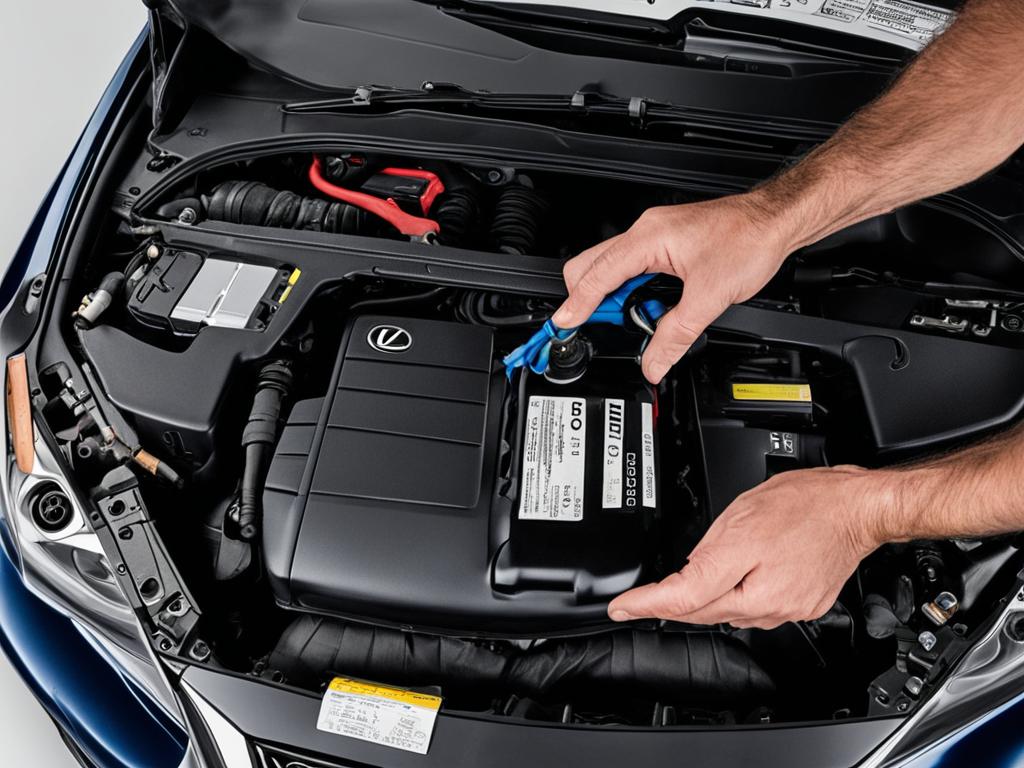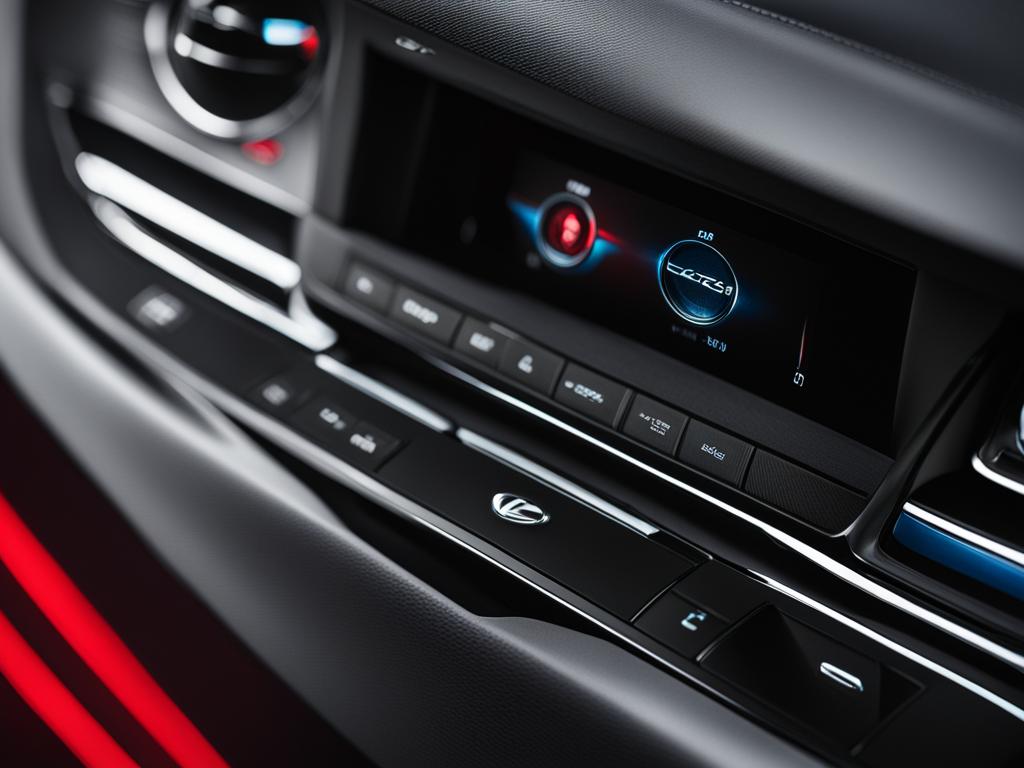Solve Check VSC Lexus IS250 Alert – Quick Tips
Have you ever encountered a check VSC Lexus IS250 warning light while driving? The VSC, or Vehicle Stability Control, system in a Lexus IS250 is essential for ensuring safety, especially on slippery surfaces or during sudden maneuvers. Situations like being stuck in snow or mud may require manual disabling of the VSC and TRAC systems, which help maintain appropriate wheel traction. However, if these systems don’t re-enable automatically, it’s essential to know how to fix the Lexus IS250 VSC light and seek professional assistance if needed. This article provides essential information and quick tips to address a VSC warning in your Lexus IS250 efficiently.
Key Takeaways
- Understanding the purpose and function of the VSC system in a Lexus IS250.
- Recognizing the possible causes of a Lexus IS250 VSC light activation.
- Simple DIY steps to reset the VSC light on a Lexus IS250.
- Identifying when it’s necessary to seek professional help for VSC-related issues.
- Preventative measures to avoid future VSC alerts and ensure safety on the road.
Understanding the VSC System in Your Lexus IS250
When the VSC light is illuminated on the dashboard of a Lexus IS250, it signifies that the Vehicle Stability Control is active or has encountered an issue. This essential system aims to prevent skidding and assist drivers with maintaining control during sudden turns or on slick road surfaces. Working in tandem with the Traction Control system (TRAC), both components are vital to the proper operation of your vehicle.
What Does the VSC Light Indicate?
The VSC light on a Lexus IS250’s dashboard may signal two primary scenarios. When it’s on, the VSC system might be actively engaged in ensuring vehicle stability or experiencing a lexus is250 vsc system malfunction. Should the VSC system be manually turned off, such as when attempting to free the vehicle from snow or mud, you must enable the TRAC and VSC systems as soon as the car returns to stable ground. If these systems fail to engage automatically, seek professional assistance.
How the VSC Improves Vehicle Safety
During adverse driving conditions, the VSC system plays a significant role in guaranteeing vehicle stability and the driver’s safety. Whether contending with slippery surfaces or unexpected maneuvers, the VSC system remains alert, reducing the risk of skidding or losing control of the car. The peace of mind offered by the VSC system is invaluable, which is why it’s crucial to address any vsc light lexus is250 alerts promptly.
The Relationship Between VSC and TRAC Systems
Beyond the VSC system, the TRAC system is also integral to the safe operation of a Lexus IS250. TRAC focuses on preventing excessive spinning of the drive wheels on slippery surfaces, ensuring better tire traction. Since the VSC and TRAC systems work together, they must be in optimal condition and require professional assessment if either fails to enable after being manually shut off or if you notice unusual noises coming from the engine compartment when the vehicle starts moving or the brake pedal is depressed repeatedly. Keep an eye on any lexus is250 vsc light on alerts and act accordingly to ensure your car’s safety and performance.
Troubleshooting Check VSC Lexus IS250 Alerts
When troubleshooting check VSC Lexus IS250 alerts, it is crucial to recognize that each situation can be unique. For instance, experiencing a shudder upon start-up or near-stalling alongside the VSC, traction control, and engine lights activating may indicate different underlying issues. Some Lexus IS250 owners have reported taking quick action to resolve these issues by resetting the vehicle’s computer through detaching the negative battery cable. However, persistent or returning warnings usually signify a deeper problem.

Carbon buildup is a widespread concern that may cause the VSC and check engine lights to activate. Lexus has addressed this issue under certain warranty conditions, providing relief to affected vehicle owners. The following table presents possible scenarios and steps for initial troubleshooting when you encounter a Lexus IS250 VSC warning light:
| Scenario | Potential Issue | Initial Troubleshooting Steps |
|---|---|---|
| VSC and check engine lights activate simultaneously | Carbon buildup | See if the issue is covered by your Lexus warranty and consult with a professional mechanic |
| Shudder upon start-up or near-stalling, with VSC, traction control, and engine lights activating | Various underlying issues | Attempt to reset the vehicle’s computer by detaching the negative battery cable, but seek professional assistance if warnings persist |
| VSC light activates without other warning lights | Possible VSC system malfunction | Consult with a professional mechanic for a comprehensive diagnostic check |
In some cases, the cause of a VSC warning may be relatively minor and easily addressed; however, complex issues require a more in-depth diagnostic assessment by a qualified professional. Recognizing the severity of the VSC alerts and taking appropriate action is vital in maintaining your Lexus IS250’s ongoing performance and safety.
Common Causes for Lexus IS250 VSC Light Activation
Understanding what triggers the VSC light in a Lexus IS250 can help you determine whether it’s a simple fix or something more significant requiring professional assistance. The activation of the VSC light can sometimes be attributed to a false alarm or due to sensor and electrical failures.
When It’s Just a False Alarm
Occasionally, the cause for the lexus is250 vsc check engine light activation might be as simple as a loose gas cap or accidentally pressing the VSC off button. Ensuring the gas cap is correctly tightened and refraining from accidentally pressing the VSC off button can resolve these simple issues, preventing unnecessary stress over the VSC light’s activation.
Potential Sensor and Electrical Failures
There can be more technical issues that cause the VSC light to activate. For example, bad ABS sensors impacting the stability control may affect the anti-lock braking system, or electrical problems such as damaged wiring could be the culprit. Some vehicles that have received maintenance for carbon buildup at lower mileages may experience similar VSC-related problems at higher mileages.
When the VSC and check engine lights illuminate together, it’s essential to remember that this doesn’t always indicate a disastrous situation. Potential issues could range from a minor problem, such as a defective gas cap allowing air into the system, to more severe engine-related malfunctions. In such cases, understanding how to fix the lexus is250 vsc light becomes crucial, and seeking professional help may be necessary to address the underlying issue.
DIY Steps to Reset the VSC Light on a Lexus IS250

If your lexus is250 vsc light is on and you believe it to be a false alarm, or you have managed to address a minor VSC-related issue, there are some simple do-it-yourself steps you can try to reset the VSC light. The process might help fix lexus is250 vsc light and ensure your car’s safety and performance remain at optimal levels.
- Drive your Lexus IS250 until it reaches its full operating temperature.
- Turn off the engine and make sure the vehicle is parked on a flat surface.
- Using a socket wrench, disconnect the negative battery cable (usually black) from the battery terminal. Be extra careful during this step as the battery contains hazardous chemicals.
- Wait for approximately 10 to 15 minutes.
- Reattach the negative battery cable to the battery terminal.
- Restart the engine and check if the VSC light has turned off.
This method has proven to be effective for some Lexus IS250 owners experiencing VSC light issues. If the warning lights persist after attempting these steps, there might be a deeper problem that requires professional assistance.
Note: Disconnecting the battery may result in loss of some pre-set settings, such as radio channels, clock, and seat adjustments. You may need to configure these settings again after completing the process.
When diagnosing the issue yourself doesn’t resolve the problem, it’s essential to visit a professional mechanic or your Lexus dealership. Remember, the VSC system plays a vital role in your vehicle’s stability and overall safety, and unsolved issues might lead to serious consequences.
Check VSC Lexus IS250: When to Seek Professional Help

When dealing with a lexus is250 vsc system malfunction or an unresolved check vsc lexus is250 alert, it’s crucial to determine when professional help is necessary. In certain instances, additional warning lights or continuous VSC alerts are indicators that a more thorough examination of the vehicle’s systems is required. Understanding these situations and their implications are essential for maintaining your Lexus IS250’s performance and reliability.
Deciphering Multiple Dashboard Warning Lights
Multiple dashboard warnings typically signal the need for a comprehensive diagnostic check to pinpoint the root cause. When the VSC light is accompanied by additional warning lights, address these issues with a professional to ensure the proper function of all related systems. The sooner these problems are identified and resolved, the more likely your Lexus IS250 remains a safe and dependable vehicle.
Warranty and Non-Warranty Repairs for VSC Issues
Whether your vehicle is under warranty or not, Lexus has historically addressed VSC-related issues, such as carbon buildup, through an extended customer care program. It’s essential to get timely attention to these alerts to ensure the vehicle’s safety and performance are not compromised. For non-warranty repairs, the cost can be significant, so consulting with Lexus dealerships or qualified professionals is highly recommended.
In essence, recognizing signs that suggest a need for professional help in handling your Lexus IS250’s VSC system issues is critical in maintaining the vehicle’s safety and performance. While initial troubleshooting can sometimes remedy the problem, it’s crucial to seek expert assistance when faced with persistent or complex alerts. Be proactive in addressing these concerns to ensure your Lexus IS250 continues to provide a reliable driving experience.
Preventative Measures to Avoid Future VSC Alerts
To ensure the ongoing reliability of your Lexus IS250’s VSC system and avoid future VSC alerts, it is essential to take preventative measures such as adhering to a regular maintenance schedule and being aware of common triggers that could cause VSC system malfunction.

Regular Maintenance Schedule for the VSC System
Proper maintenance of your Lexus IS250 VSC system involves regular check-ups by professionals who are familiar with the TRAC and VSC systems’ operations. Establishing a routine maintenance schedule not only helps to maintain vehicle health but also keeps the VSC system functioning optimally. This can reduce the likelihood of unexpected lexus is250 vsc off light issues arising. Below is an example of a VSC system maintenance schedule:
| Mileage | Service |
|---|---|
| 10,000 miles | Inspect VSC system components |
| 25,000 miles | Check VSC and TRAC systems for proper function |
| 50,000 miles | Perform a comprehensive VSC system diagnostic |
| 75,000 miles | Replace any worn VSC system components |
| 100,000 miles | Perform a detailed VSC system inspection and fix any issues |
Understanding and Avoiding Common Triggers
Besides following a regular maintenance schedule, it’s also helpful for drivers to understand everyday situations that may cause vsc light lexus is250 issues, such as the potential for accidental disengagement or factors that might lead to sensor or electrical failures. Avoiding these common triggers can help prevent VSC system malfunction:
- Ensure the VSC off button is not inadvertently pressed.
- Check for loose connections or damaged wiring around VSC system components.
- Avoid driving through deep water or on rough terrain that could damage VSC system sensors.
- Practice safe driving habits to minimize excessive wear on VSC system components.
- Address any engine or braking issues promptly, as they could affect the VSC system’s operation.
By maintaining your vehicle’s health and remaining vigilant for early signs of VSC system trouble, you can prevent future alerts and ensure the ongoing reliability of your Lexus IS250’s VSC system.
Conclusion
In summary, the Check VSC Lexus IS250 alert serves as a crucial indicator of your vehicle’s stability system status. Whether it’s a quick fix or a sign of a more severe issue, understanding the potential causes and appropriate responses is essential for maintaining the vehicle’s performance and safety. Some Lexus IS250 VSC warning light activations can be addressed through straightforward resetting procedures. However, if alerts persist or become more complicated, it’s important to consult a professional mechanic.
Furthermore, adhering to a regular maintenance schedule and being aware of common malfunction triggers play a significant role in avoiding future VSC system issues. Regular check-ups by professionals familiar with the TRAC and VSC systems’ operations ensure the ongoing reliability of your Lexus IS250’s stability system.
In conclusion, diligently addressing the Check VSC Lexus IS250 alert is vital for vehicle safety and performance. By recognizing common problem triggers and maintaining a consistent maintenance schedule, you can ensure that your Lexus IS250 remains a dependable and secure driving companion on the road.
FAQ
What does the VSC light indicate on a Lexus IS250?
The VSC light on a Lexus IS250 signifies that the Vehicle Stability Control system is active or has encountered an issue. This system helps prevent skidding and assists in maintaining control during sudden turns or on slippery surfaces.
How does the VSC system improve vehicle safety?
The VSC system in a Lexus IS250 aids with maintaining control on slick road surfaces or during sudden maneuvers by preventing skidding and assisting the driver in navigating potentially dangerous situations safely.
What is the relationship between the VSC and TRAC systems?
Both the VSC (Vehicle Stability Control) and TRAC (Traction Control) systems work together to maintain proper tire traction. The TRAC system prevents drive wheels from excessive spinning on slippery surfaces, while the VSC helps maintain control in difficult driving conditions.
How can I troubleshoot a Check VSC Lexus IS250 alert?
Troubleshooting a Check VSC alert involves identifying the cause of the issue such as a loose gas cap, accidental pressing of the VSC off button, or more technical concerns like bad ABS sensors and damaged wiring. The vehicle may also require a reset or professional diagnostic check for complex alerts.
How can I reset the VSC light on my Lexus IS250?
To reset the VSC light, drive the vehicle until it reaches full operating temperature, turn off the engine, remove the negative battery cable with a socket wrench, wait for a short interval, reattach the cable, and restart the engine. If warning lights persist, seek professional assistance.
When should I seek professional help for VSC system issues?
Professional help should be sought if the Lexus IS250’s VSC system issues are accompanied by multiple warning lights, persistent warnings, or if the troubleshooting steps fail to resolve the problem. A comprehensive diagnostic check will help identify the root cause of the issue.
How can I prevent future VSC system alerts on my Lexus IS250?
Adhering to a regular maintenance schedule, consulting with professionals familiar with the VSC system, and understanding common triggers for VSC issues are vital steps in ensuring the ongoing reliability of your Lexus IS250’s VSC system.




